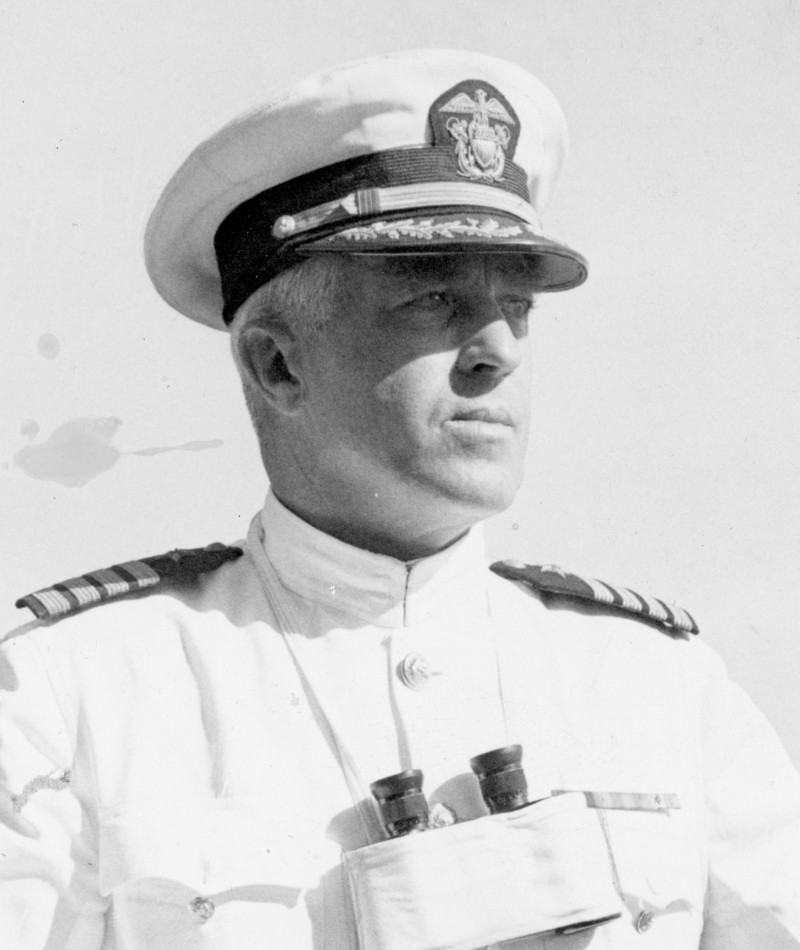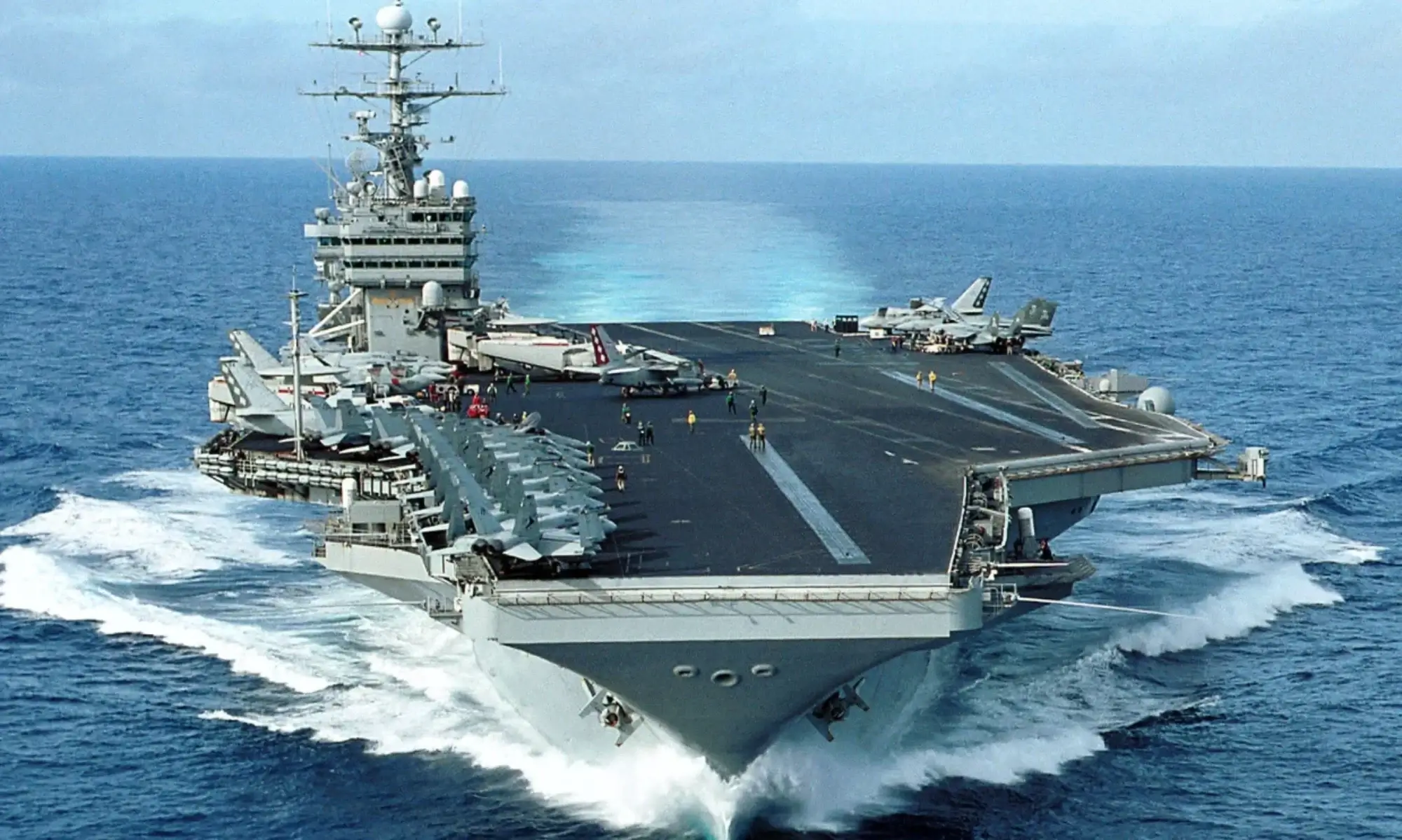
“Any man who may be asked in this century what he did to make his life worthwhile, I think can respond with a good deal of pride and satisfaction: ‘I served in the United States Navy.'” JFK
Hello, members and friends of the Americans For a Stronger Navy. Today, we take a break from our podcast series to honor those who have served our nation with extraordinary bravery and sacrifice.
As part of our Medal of Honor Monday series, we will feature a different Navy hero every week, and share their stories of valor and service with you. We hope that by doing so, we can inspire you to appreciate and support the Navy and its mission, and to learn from the examples of courage and patriotism that these heroes have set in times of war and peace.
This week, we are proud to present Navy Rear Adm. Daniel Judson Callaghan, who commanded ships fighting against a massive enemy force during one of the deadliest battles of World War II. Callaghan did not survive the ordeal, but his leadership, foresight and courage helped lead his sailors to victory. That earned him a posthumous Medal of Honor.
Callaghan was born on 26 July 1890 in Oakland, California. He graduated from the Naval Academy in 1911, and served as an engineering officer, an executive officer, and a naval aid to President Franklin D. Roosevelt. By April 1942, he was promoted to rear admiral while commanding the cruiser USS San Francisco.
By November, he was in the middle of the Naval Battle of Guadalcanal, where the Allies had retaken the island from the Japanese, who were desperately trying to take it back. On the night of 12 November, Callaghan learned that a large Japanese naval force was heading toward his position, which was in Iron Bottom Sound between Guadalcanal and Savo Island.
The Japanese ships were superior in numbers and in power, but Callaghan decided to engage them with his task force, which consisted of three light cruisers, eight destroyers and two heavy cruisers, including the San Francisco, the task force’s flagship. Hedevised a plan of attack, and led his forces into battle against tremendous odds.
The battle was chaotic and fierce, and the San Francisco was the first to face enemy ships by taking on the Hiei, a Japanese battleship, in a head-on duel. Callaghan and the San Francisco’s commanding officer, Capt. Cassin Young, were both on the ship’s bridge wing directing close-range operations. They were both killed by a shell from the Hiei, but not before they inflicted heavy damage on the enemy ship.
The blast also knocked the ship’s communications officer, Lt. Cmdr. Bruce McCandless, unconscious. When he woke up, he realized Callaghan and Young were gone, so he took command of the ship and the task force, and ordered them to continue their bombardment. He also managed to sink a destroyer and damage two other Japanese vessels.
Eventually, the Japanese admiral, who was commanding the enemy ships, lost his nerve and ordered his crews to withdraw and regroup. The battle was over, and the Allies had won a decisive victory. They had prevented the Japanese from bombarding Henderson Field, the airfield on Guadalcanal, and from delivering troops to the island’s shores. The battle was the last in a series that forced the Japanese to surrender Guadalcanal for good, handing the Allies a strategic victory.
The win came at a heavy price for the Allies, too. Nine U.S. ships were sunk while about a dozen more were damaged. More than 1,700 Americans lost their lives, including Callaghan. He was buried at sea, and his name is listed on the Wall of the Missing at the Manila Cemetery in the Philippines.
On 9 December 1942, his son, Navy Lt. j.g. Daniel J. Callaghan Jr., received the Medal of Honor on his father’s behalf from President Franklin D. Roosevelt. His citation read:
“For extraordinary heroism and conspicuous intrepidity above and beyond the call of duty during action against enemy Japanese forces off Savo Island on the night of 12-13 November 1942. Although out-balanced in strength and numbers by a desperate and determined enemy, Rear Adm. Callaghan, with ingenious tactical skill and superb coordination of the units under his command, led his forces into battle against tremendous odds, thereby contributing decisively to the rout of a powerful invasion fleet, and to the consequent frustration of a formidable Japanese offensive. While faithfully directing close-range operations in the face of furious bombardment by superior enemy fire power, he was killed on the bridge of his flagship.”
Callaghan is a true Navy hero, who exemplified the values of courage, honor, and commitment. He showed us what it means to defend our country and our freedom, even in the face of overwhelming odds and danger. He also showed us what it means to lead and inspire our fellow sailors and our Navy family, even in the midst of chaos and pain. He is a role model and an inspiration for all of us, and we are grateful for his service and his legacy.
We hope that you enjoyed this week’s Medal of Honor Monday, and that you learned something new and valuable from Callaghan’s story. Please join us next week, as we feature another Navy hero who earned the Medal of Honor. Thank you for your attention and your support. Stay safe and stay strong. This is Bill, signing off.

